Spices and herbs are essential ingredients in culinary arts, providing flavor, aroma, and often color to various dishes. While the terms “spices” and “herbs” are sometimes used interchangeably, they have distinct meanings in the culinary world. In Idhayam Parikshan Labs Limited, spice and herb food testing labs ensure that consumers receive products of high quality, free from contaminants, and true to their labeling. They play a vital role in maintaining the integrity of the spice and herb industry.Idhayam Parikshan labs Limited plays a crucial role in ensuring that herbs and spices meet quality standards, safe for consumption, and are authentic. These tests are essential for both consumers and the food industry to maintain the integrity of products in the market. Herbs and spices are essential components of cooking, adding flavor, aroma, and sometimes color to various dishes. They have been used for centuries in different cultures for culinary, medicinal, and even preservative purposes. In Idhayam Parikshan Labs Limited, herbs and spices are analyzed to ensure their quality, authenticity, safety, and compliance with regulatory standards. Idhayam Parikshan labs Limited use a combination of these methods to provide comprehensive analyses of herbs and spices. These tests are essential to maintain the quality and safety of these products for consumers. In food testing labs, herbs and spices are analyzed to ensure their quality, authenticity, safety, and compliance with regulatory standards. Here are some of the common methods and techniques used in food testing labs to analyze herbs and spices. Herbs And Spices

Mycotoxins Testing |
|
|---|---|
Mycotoxins are toxic secondary metabolites produced by fungus, also known as mold. These can cause diseases in humans and animals, which can also prove to be fatal. It is estimated that there are thousands of fungal species, out of which about 100 pose serious health risk to humans and animals. |
|
| Aflatoxins (B1, B2, G1, G2) | Zearalenone |
| Aflatoxin M1 | T2-Toxin |
| Ochratoxin A | Fuminosin B1, B2 |
| Deoxynivalenol(DON) | Citrinin |
Here are some of the common methods and techniques used in Idhayam Parikshan Labs Limited to analyze herbs and spices:
Moisture Content:
Labs analyze moisture content to determine the freshness of herbs and spices. Excessive moisture can lead to mold growth and degradation of quality.
Ash Content:
Ash content analysis helps in identifying the quantity of inorganic materials present, which can indicate adulteration or contamination.
Volatile Oil Content:
Some herbs and spices are valued for their essential oil content. Distillation methods can be employed to extract and quantify these oils.
Total Plate Count:
This test indicates the overall microbial load in the sample and helps assess its freshness and potential for spoilage.
Pathogen Detection:
Labs test for the presence of harmful pathogens such as Salmonella, E. coli, and molds, which can cause foodborne illnesses.
Gas Chromatography-Mass Spectrometry (GCMS/LCMS):
GCMS/LCMS is used to detect and quantify pesticide residues in herbs and spices. These residues must be within permissible limits for the product to be considered safe for consumption.
Particle Size Analysis:
Herbs and spices might be ground or crushed to different particle sizes for specific culinary uses. Analyzing particle size ensures consistency in the final product.
Organoleptic Evaluation:
Trained panels assess the color, aroma, flavor, and texture of herbs and spices. Deviations from expected sensory characteristics could indicate quality issues.
















